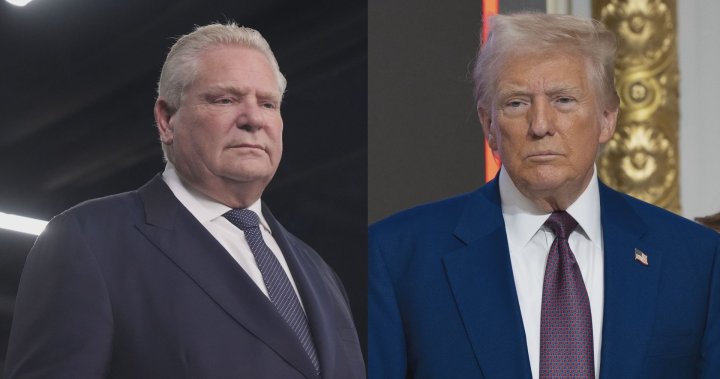The looming threat of tariffs imposed by U.S. President-elect Donald Trump on Canadian goods has sparked a trans-border trade dispute, with Ontario Premier Doug Ford retaliating with a potential energy export embargo. Trump’s justification for the tariffs rests on the unsubstantiated claim that the U.S. subsidizes Canada by over US$100 billion annually, a figure he has previously cited without providing any supporting evidence. This economic standoff highlights the complex and often contentious trade relationship between the two North American neighbors.
Trump’s assertion of U.S. subsidization of Canada lacks clarity and appears to conflate several economic concepts. While he hasn’t specified the basis for this figure, it seemingly misrepresents the nature of trade deficits and direct investment. A trade deficit, which the U.S. does have with Canada, represents the difference between the value of goods and services imported and exported between the two countries. It does not constitute a subsidy. Similarly, direct investment, where Canadian investment in the U.S. significantly outweighs U.S. investment in Canada, reflects business decisions driven by market opportunities and not a form of subsidy. Trump’s mischaracterization of these economic realities fuels the trade tensions.
Ford’s countermeasure involves potentially restricting Ontario’s energy exports, impacting approximately 1.5 million American residents in bordering states. This move underscores the interconnectedness of the two economies and the potential for mutually detrimental consequences. Trump’s dismissive response to Ford’s threat further escalates the situation, indicating a willingness to engage in a trade war despite the potential harm to both countries.
The potential energy export restriction is just one of several retaliatory measures being considered by Ontario. Other options include restricting exports of critical minerals essential for electric vehicle batteries, limiting U.S.-based companies’ participation in Ontario government procurement processes, and directing the Liquor Control Board of Ontario (LCBO), the world’s largest alcohol purchaser, to cease purchases of American-made alcohol. These “escalation maneuvers,” as described by sources within the Ford government, are still under development but demonstrate the province’s willingness to engage in a multi-pronged response to the threatened tariffs.
The genesis of this trade dispute lies in Trump’s post-re-election pledge to impose 25% tariffs on all imported goods from Canada and Mexico unless these countries address issues related to illegal immigration and fentanyl trafficking into the U.S. This linkage of trade policy with unrelated issues further complicates the situation and suggests a politically motivated strategy rather than a purely economic one.
In response to the tariff threat, Canada’s premiers have engaged in discussions with the federal government to formulate a coordinated response. Prime Minister Justin Trudeau has outlined a plan to enhance border security, a measure aimed at addressing one of Trump’s stated concerns. However, the core issue of the threatened tariffs and the underlying economic misrepresentations remain unresolved, leaving the potential for a damaging trade war to loom over the U.S.-Canada relationship. The economic interdependence of the two countries necessitates a more reasoned and fact-based approach to resolving these differences rather than resorting to economically harmful retaliatory measures.










